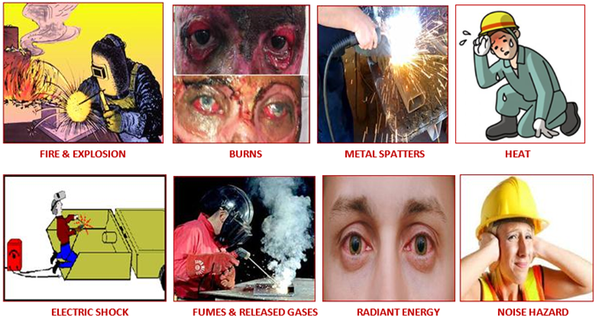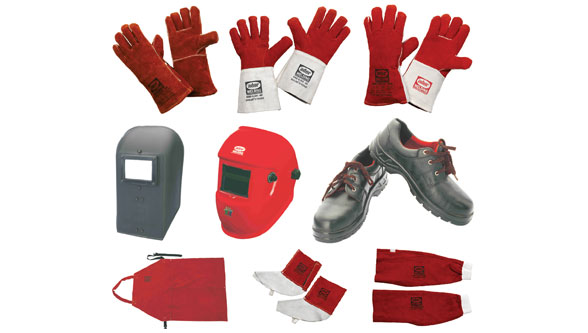The 5 Most Common Welding Hazards
We’re going to cover the five most common welding hazards.
Beginning with number one, electricity. Electric shock can kill. Arc welding often uses electricity as a source of power and heat for welding. Hazards are present during installation, hookup and during general day-to-day operations like changing your consumables.
Hazards are also present during service and repair of machines, so it's important to unplug electrical equipment and disconnect power to protect yourself.
Number two, intense light. Arc rays can burn your eyes and skin and lead to potential long-term injury. You should cover all your exposed skin and never look directly at a welding are without a properly shaded filter.
Number three, sparks, spatter and fume can cause fire, burns and breathing issues. So clear the weld zone and avoid breathing any fumes directly.
Number four,heat sources and hot materials. High temperatures can cause severe burns and fire. Materials like stainless steel and aluminum don’t have a visual indicator for temperature. So you need to pretend like everything is hot when you're in the workshop and use tools to properly handle the equipment and never touch anything unless you're wearing gloves.
Number five, pressurized gas cylinders. You need to handle and store gases properly because these high pressure cylinders contain potentially suffocating or flammable gas. All cylinders should be clearly marked and you should follow specific rules for storing and handling the gases you use.

These are the basics of welding safety the things that everyone should know.
As a reminder, the most relevant information can be found in your owner’s manual and referenced in an cz 49.1.
Remember that each situation is unique and you should know more about your situation and weld safe.











